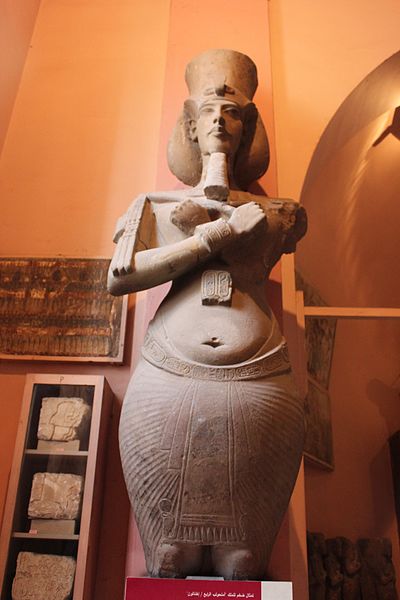Amarna art, or the Amarna style, is a style adopted in the Amarna Period during and just after the reign of Akhenaten in the late Eighteenth Dynasty, during the New Kingdom. Whereas ancient Egyptian art was famously slow to change, the Amarna style was a significant and sudden break from its predecessors both in the style of depictions, especially of people, and the subject matter. The artistic shift appears to be related to the king's religious reforms centering on the monotheistic or monolatric worship of the Aten, the disc of the Sun, as giver of life.
Akhenaten, Nefertiti and three daughters beneath the Aten, Berlin
Two of Akhenaten's daughters, Nofernoferuaton and Nofernoferure, c. 1375–1358 BC. This comfortable and intimate family setting is repeated in other pieces of Amarna art
Princess of the Akhenaten family, Louvre
Akhenaten, Pharaoh of Egypt. Egyptian Museum, Cairo.
Akhenaten, also spelled Akhenaton or Echnaton, was an ancient Egyptian pharaoh reigning c. 1353–1336 or 1351–1334 BC, the tenth ruler of the Eighteenth Dynasty. Before the fifth year of his reign, he was known as Amenhotep IV.
Statue of Akhenaten at the Egyptian Museum
Akhenaten, Nefertiti and their children
This limestone relief of a royal couple in the Amarna style has variously been attributed as Akhenaten and Nefertiti, Smenkhkare and Meritaten, or Tutankhamun and Ankhesenamun.
Akhenaten's elder brother Thutmose, shown in his role as High Priest of Ptah. Akhenaten became heir to the throne after Thutmose died during their father's reign.








